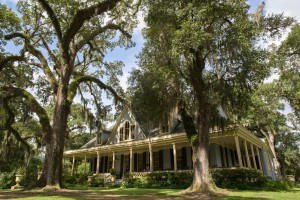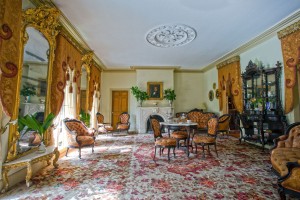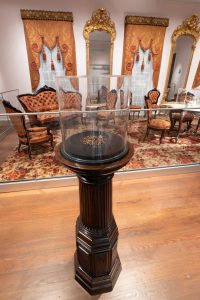
A display of iron nails is on view in the installation of the Greenwood parlor. Likely forged by an enslaved blacksmith, these nails were used in 1852 to install this wall-to-wall carpeting onto the cypress floorboards of Greenwood’s parlor. The modest nails and the nameless labor they represent contrasts sharply with the elegant parlor and the privilege it represents. The juxtaposition is a jarring reminder of the system of human bondage that sustained the American economy in the nineteenth-century. Images courtesy of the New Orleans Museum of Art. Photo by Roman Alokhin.
The New Orleans Museum of Art (NOMA) announces the permanent installation of The Greenwood Parlor, now on view. In 2014, NOMA acquired the parlor furnishings from Greenwood Plantation, today called Butler-Greenwood, in St. Francisville, Louisiana. The 1850s/60s parlor suite assembled by Harriet Flower Mathews (1794-1873) survives with original textiles and rich documentation. After careful conservation, the parlor is one of the South’s best preserved examples of a pre-Civil War interior. In this installation, NOMA takes thoughtful steps to present the parlor’s story and recognize all the lives lived at Greenwood Plantation—Harriet Mathews, her family, and, equally, the enslaved men, women, and children whose labor created their wealth.
“NOMA is dedicated to preserving and sharing one of the region’s most important antebellum rooms with the public,” said Susan Taylor, Montine McDaniel Freeman Director of NOMA. “And with this room comes a complicated story, one that we firmly believe in presenting to our visitors as a means of encouraging dialogue and understanding of the challenging dynamics of our collective past.”
The Mathews family’s upholstered parlor furniture, silk draperies, and wall-to-wall carpet remained intact within the same room for more than 150 years before being acquired by NOMA. Family records in the archives at Louisiana State University detail the cost, purchase date, and retailer for nearly every item assembled by Mathews for this parlor. These same records also provide details of operating the family’s four Louisiana plantations, which relied on slave labor to harvest sugarcane and cotton. To remember this history of enslavement, upon entry into the gallery are the nails used in 1852 to install the wall-to-wall carpeting in the parlor, likely forged by an enslaved blacksmith. The modest nails and the nameless labor they represent contrasts sharply with the elegant parlor. Mel Buchanan, RosaMary Curator of Decorative Arts and Design at NOMA, created this juxtaposition as a reminder of the system of human bondage that sustained the American economy in the nineteenth-century.
“To live in the American South is to live daily with physical and social reminders of a complicated and often painful history,” said Buchanan. “NOMA believes part of the responsibility of the today’s museum is to directly address, rather than avoid, difficult historical material. This is a first step toward correcting omissions of the past, and in creating a more equitable telling of our histories for future generations.”
This installation has been generously supported by Stephen W. Clayton in memory of William Perry “Pepper” Brown IV.
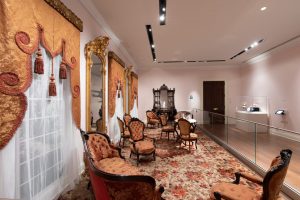
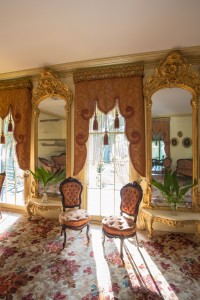
NOMA members inspire the love of art in every visitor who walks into the Great Hall or through the gates of the Sydney and Walda Besthoff Sculpture Garden.
In addition to enjoying benefits like special members’ previews of exhibitions, free wellness classes surrounded by sculptures, and a complimentary subscription to NOMA Magazine, our members enable schoolchildren to discover the Old Masters, community members to engage with world-class art and local artists, and NOMA’s curators to present innovative and provocative exhibitions year after year.
JOIN TODAY
